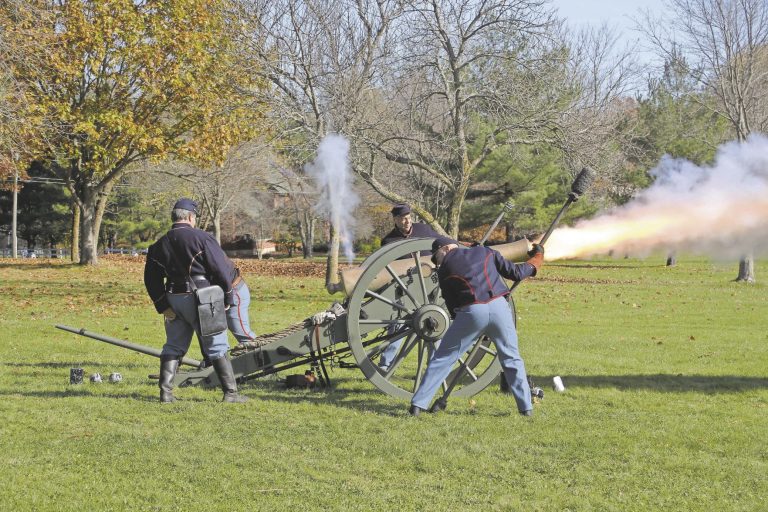
By Lea Kahn, Staff Writer
Jeffrey Cohen was born 160 years too late.
Instead of being a real cannoneer during the Civil War, or a member of an artillery unit, Cohen has had to be content with taking part in historical re-enactments.
Cohen, who lives in Rahway, is the commander of the 6th New York Independent Artillery Battery re-enactment group, which brought its authentic Civil War-era cannon to Montgomery Township’s Veterans Day celebration on Nov. 11.
“I have always been interested in the Civil War,” said Cohen, who was dressed in a dark blue Union Army uniform. He began as a re-enactor in an infantry unit and then joined the artillery re-enactment group.
Cohen and the re-enactors from the 6th New York Independent Artillery Battery – the original unit was organized in 1861 and discharged in 1865 – frequently travel to participate in Civil War re-enactments and wherever else they may be invited to appear.
At Montgomery Veterans Park, the re-enactors positioned themselves around the cannon – a 12-pound Napoleon – and fired it several times. Four members of the seven-man crew stood near the front of the cannon and three stood to the rear.
Cohen stood off to one side, holding a sword in his hand. When he lowered his arm, the artillerymen fired off the cannon. The small puff of smoke quickly expanded and drifted away from the cannon.
Spectators were drawn to the cannon, and Cohen explained how it works.
Artillerymen had a choice of cannon balls to use, he said. If the opposing army was within 400 yards, a canister full of inch-and-a-half iron balls would be fired out of the cannon to kill the soldiers.
A solid cannon ball also could be fired. A cannon ball rolling on the ground would “take your leg off” if a soldier tried to stop it or found himself in its way, Cohen said.
But it wasn’t necessarily the cannon ball or the iron balls that killed soldiers. It was the concussion from the cannon being fired and the tiny bits of broken cannon ball shells that were just as deadly, he said.
And by the way, the cannon’s range was 1,680 yards, or about one mile, Cohen said.
